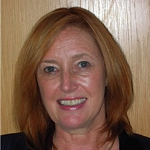ISO 22330:2018 Security and resilience - Business continuity management systems - Guidelines for people aspects on business continuity
This Technical Specification focuses on highlighting the needs of people who could be involved in, or affected by, a disruptive event. It provides guidance for anyone with responsibility for human resources associated with business operations in these circumstances. It is not a definitive guide to managing an incident but a review of the people issues which need to be considered and the possible strategies for improving these aspects of the overall response.
This Technical Specification complements ISO 22301 and ISO 22313 and provides additional information in this important aspect of continuity management. It is applicable to all types and sizes of organizations
Lynne Donaldson (UK), the project leader responsible for the development of ISO 22330, explains:
"The causes of disruptions are many and varied, which is why BCM focuses on developing,validating and exercising plans to manage the consequences of any disruption. The uniform factor in all the plans and responses is the involvement of people both those affected by the incident and those involved in delivering the response and business recovery. Good leadership skills, a sound understanding of the potential impacts on people and familiarity with the recovery processes are required to deliver the expected response. This should be supported by preparation and training to build a resilient work force which understands the risks and responses. Current documentation gives little guidance on the people related aspects of this."
ISO/TS 22330:2018, Security and resilience - Business continuity management systems - Guidelines for people aspects on business continuity, is available from ISO national member institutes. It may also be obtained directly from the ISO Central Secretariat, respectively through the ISO Store or by contacting the Marketing, Communication & Information department.
Suggested further reading: Interview with Lynne Donaldson at the ISO/TC 292 plenary meeting in Edinburgh